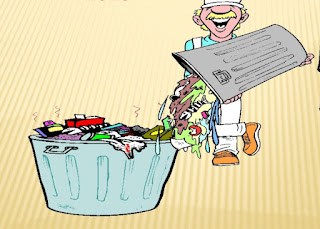Fire Hazards
FIRE HAZARDS
Introduction
·
Fire hazards are among the most dangerous
threats in any facility, but their implications in a hospital can be
particularly devastating due to the presence of patients who may be immobile,
oxygen-rich environments, and complex equipment.
·
Ensuring fire safety in hospitals is crucial not
just for protecting property but also for saving lives.
Elements of Fire
A fire requires three essential components, often
described as the Fire Triangle:
- Fuel:
Any combustible material – paper, cloth, chemicals, gases, etc.
- Heat:
A source to ignite the fuel – electrical sparks, open flames, friction,
etc.
- Oxygen:
Usually present in the air (21%), but enriched environments like oxygen
therapy units in hospitals can accelerate fire spread.
These three elements must be present simultaneously
for a fire to occur. Removing any one will extinguish the fire.
Fire Hazard
·
A fire hazard refers to any condition or
situation that increases the likelihood of fire or makes the impact of a fire
more dangerous.
·
Fire hazards in hospitals can be due to:
·
Faulty wiring
·
Overloaded circuits
·
Flammable gases
·
Paper records
·
Linens and curtains
·
Cooking in hospital kitchens
·
Unattended equipment
Causes of Hospital Fire
- Electrical
faults: Short circuits, loose wiring,
overloading
- Oxygen
leakage: Supports rapid combustion
- Negligence:
Smoking in unauthorized areas, unattended equipment
- Surgical
equipment: Lasers, cauterizing tools
- Kitchens
and cafeterias: Cooking oil fires
- Chemical
storage: Improper storage of inflammable
chemicals
Classification of Fire
|
Class |
Type of Material |
Example |
|
A |
Solid materials (wood, cloth, paper) |
Curtains, furniture, bedding |
|
B |
Flammable liquids |
Alcohol, solvents, oils |
|
C |
Flammable gases |
LPG, oxygen, anesthetic gases |
|
D |
Combustible metals |
Magnesium, potassium |
|
E |
Electrical fires |
Electrical panels, wiring |
|
F |
Cooking oils/fats |
Kitchen fires |
Fire Protection
Fire protection is a set of practices to reduce the
impact of fire through:
- Passive
Protection: Fire-resistant materials, fire
doors, safe design
- Active
Protection: Fire alarms, extinguishers,
sprinklers
- Procedural
Measures: Emergency drills, fire safety
training, evacuation plans
Fire Points and Escape Routes
Fire Points:
- Areas
equipped with:
- Fire
extinguishers (CO₂, foam, dry chemical)
- Fire
alarm buttons
- Hose
reels
- Sand
buckets
- Fire
hydrants
Escape Routes:
- Clearly
marked pathways leading to safety
- Should
be:
- Unobstructed
- Well-lit
with emergency lights
- Equipped
with exit signs
- Known
to all staff and rehearsed during drills
Risk Evaluation
- Identifying
fire hazards
- Assessing
who might be harmed and how
- Evaluating
existing precautions
- Determining
additional control measures
- Documenting
findings
- Reviewing
and updating assessments regularly
Meaning of Fire Manual
A Fire Manual is a formal document containing:
- Hospital
fire safety policy
- Roles
and responsibilities of staff
- Action
plans in case of fire
- Evacuation
procedures
- Maintenance
of fire safety equipment
- Record
of fire drills and training
Guidelines in Fire Manual
- Maintain
clear corridors and staircases
- Ensure
all staff know how to operate fire equipment
- Do
not block emergency exits
- Store
oxygen and flammable materials properly
- Conduct
fire drills quarterly
- Keep
emergency contact numbers visible
- Maintain
all electrical equipment regularly
Elements of Fire Safety in Hospitals
- Detection:
Smoke detectors, heat sensors
- Suppression:
Sprinklers, fire extinguishers
- Compartmentation:
Fireproof doors, partitions
- Egress:
Clear exits, ramps, signage
- Evacuation:
Wheelchairs, stretchers, evacuation chairs
- Emergency
response: Fire wardens, communication systems
Fire Safety Training
- Understanding
fire hazards
- Use
of fire extinguishers (PASS technique: Pull, Aim, Squeeze, Sweep)
- Raising
alarms
- Evacuation
procedures
- Helping
patients evacuate
- Knowing
personal roles during fire
- Use
of fire blankets, shut-off valves, etc.
Do’s and Don’ts for Electrical Fire
Prevention
Do’s:
- Use
certified electrical equipment
- Inspect
wiring and devices regularly
- Use
circuit breakers and surge protectors
- Keep
electrical areas dry and ventilated
- Train
staff to identify warning signs like sparks or burning smells
Don’ts:
- Don’t
overload sockets
- Don’t
use damaged wires or plugs
- Don’t
cover equipment with flammable materials
- Don’t
ignore unusual sounds or smells from devices
- Don’t
use temporary wiring for permanent use
Action to be Taken in Case of Fire in a
Hospital
- Raise
the Alarm:
- Activate
fire alarm system
- Call
the fire brigade (Dial 101 or hospital emergency number)
- Rescue
Patients:
- Prioritize
non-ambulatory and ICU patients
- Use
evacuation chairs and stretchers
- Contain
Fire:
- Close
doors to contain smoke and fire
- Switch
off central air-conditioning
- Use
Fire Extinguishers:
- Based
on fire class
- Trained
staff should attempt small fires only
- Evacuation:
- Follow
escape routes
- Guide
patients and staff to assembly points
- Headcount
& Medical Aid:
- Account
for all staff and patients
- Provide
first aid and transfer injured
- Report
& Investigate:
- Document
incident
- Conduct
fire cause analysis
- Take
preventive actions to avoid recurrence
Video Description
· Don’t
forget to do these things if you get benefitted from this article
· Visit
our Let’s contribute page https://keedainformation.blogspot.com/p/lets-contribute.html
· Follow
our page
· Like
& comment on our post
·




Comments